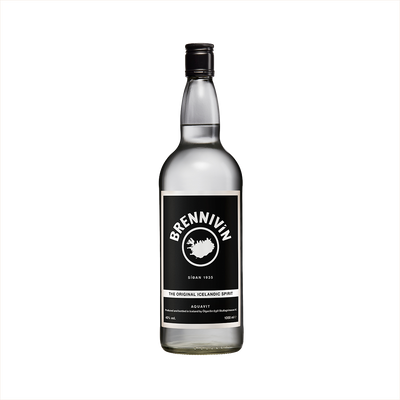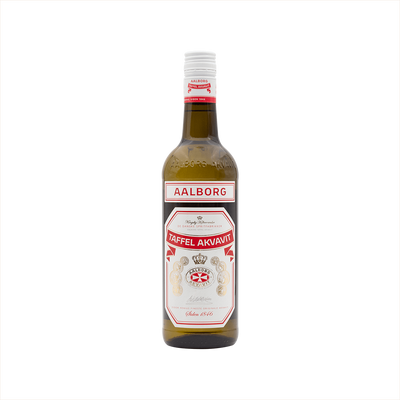Traditional Aquavit
What is Traditional Aquavit?
Traditional Aquavit represents the classic Nordic spirit that's been warming hearts across Scandinavia for centuries. This clear, grain or potato-based spirit gets its distinctive character from caraway seeds, which must be the dominant flavoring according to traditional production standards. While modern aquavits might experiment with dozens of botanicals, traditional versions keep things simple with caraway taking center stage, often accompanied by dill, fennel, or coriander for subtle complexity.
Learn More About Traditional Aquavit
What makes Traditional Aquavit unique?
Traditional Aquavit stands apart from other aquavit styles through its strict adherence to time-honored Scandinavian production methods and flavor profiles, typically featuring caraway as the dominant botanical alongside dill, fennel, and other classic Nordic herbs. Unlike modern flavored aquavits that experiment with exotic botanicals or barrel aging, Traditional Aquavit maintains the clean, herbaceous character that has defined this spirit for centuries. This style represents the purest expression of aquavit's original identity, offering a direct connection to the drinking traditions of Norway, Sweden, and Denmark without modern embellishments or innovations.
How is Traditional Aquavit made?
Traditional aquavit starts with a neutral grain or potato spirit that gets infused with botanicals, most notably caraway seeds and dill, though recipes vary wildly between producers and regions. The spirit undergoes redistillation with these aromatics, allowing the flavors to meld and concentrate into that distinctive Scandinavian profile. Many producers age their aquavit in oak barrels for additional complexity, while others prefer the clean, bright character of unaged versions.
How do you drink Traditional Aquavit?
Traditional aquavit is most commonly enjoyed neat and ice-cold, served in small glasses alongside hearty Scandinavian fare like pickled herring, smoked salmon, or rich cheeses. Many Nordic drinkers prefer it as a chilled shot during celebratory toasts, particularly at holiday gatherings and midsummer festivals. When mixed into cocktails, aquavit works beautifully in spirit-forward drinks that complement its herbal complexity—think Nordic Negroni variations, aquavit sours with dill or cucumber, or warming winter punches that play up its caraway and fennel notes.
How do I choose good Traditional Aquavit?
When selecting traditional aquavit, look for bottles that prominently feature caraway as the dominant botanical—this spice defines authentic Scandinavian aquavit and should hit you immediately on the nose. For cocktails, choose a clean, straightforward aquavit like Linie or Aalborg Taffel that won't compete with other ingredients, while sipping neat calls for more complex expressions with additional botanicals like dill, fennel, or citrus peel. Always check the label for "taffel" (table) aquavit if you want something approachable, or seek out aged versions if you prefer deeper, more mellow flavors with subtle oak influence.
Nutritional Information
Typical Calorie Range per Ounce: 65-75 calories
Typical Carbohydrate Range per Ounce: 0-0.1 grams
Typical Sugar Range per Ounce: 0 grams
Typically Gluten Free: No
Traditional aquavit is distilled from grains like wheat, rye, or barley, which contain gluten. While the distillation process removes most proteins, some sensitive individuals may still react to trace amounts. Always check the specific product label and consult with the manufacturer if you have celiac disease or gluten sensitivity, as production methods and ingredients can vary between brands.
Scrolled this far? Your reward? Traditional Aquavit Trivia!
- Traditional aquavit must cross the equator twice before it can be called "Linie Aquavit." Norwegian distillers discovered this aging method by accident in 1805 when a ship carrying aquavit barrels sailed to Australia and back. The constant motion, temperature changes, and sea air created such a superior flavor that they've been sending barrels on ocean voyages ever since.
- The word "aquavit" literally means "water of life," but here's the twist: by law, it can't actually taste like water. Scandinavian regulations require aquavit to be flavored with caraway or dill as the dominant spice, plus at least one other botanical. This means every single bottle must have a distinct herbal personality – there's no such thing as "neutral" aquavit.
- Traditional aquavit production includes a secret ingredient that sounds like science fiction: potato spirits mixed with grain alcohol. While most people assume it's made from potatoes like vodka, premium aquavit actually combines both sources. The potatoes provide creamy texture while the grain adds clean bite – creating a base spirit that's more complex than either ingredient alone.
- Christmas aquavit undergoes a completely different aging process called "Christmas barrel treatment," where distillers add holiday spices like cinnamon, cardamom, and star anise during specific moon phases. Some Norwegian families have been using the same family recipe and aging barrels for over 200 years, passing down both the liquid and the wooden vessels through generations.
- The traditional aquavit toast "Skål" comes with strict drinking rules that most people break: you must make eye contact with everyone at the table before drinking, hold the glass at chest level, and never drink before the host takes the first sip. Breaking these rules was once considered so offensive that it could end business relationships and friendships in Scandinavian culture.
Higher-proof spirits can be intense. Mix carefully, taste thoughtfully, and enjoy responsibly.
Gift message (optional)


